Where to Use Roses
Roses are a great choice for contemporary gardens, and can be used in a variety of situations to create impact. Here's our top tips on where to use roses around the garden.
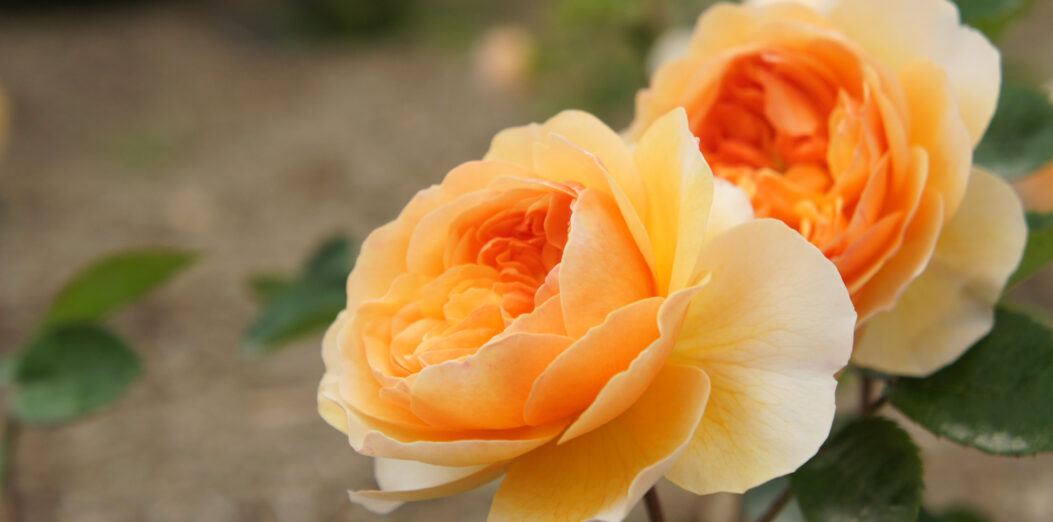
Roses are often seen as a traditional English cottage garden plant and may not be the first thing you think to plant in a more contemporary space. Having said this, they are also very versatile and can be used in many different situations, often adding a long season of colour to your garden. In this blog we’ll look at some of the places where roses will really come into their own. (You may also like to take a look at our blog on different types of roses.)
It’s worth noting here that the microclimate within your garden is very relevant when positioning your roses. Finding a well suited spot for your rose is the best way to make sure it remains disease free and flowers profusely. Take the time to find out how much sun, space and drainage your rose likes. (This will be covered in more detail in my next blog.)
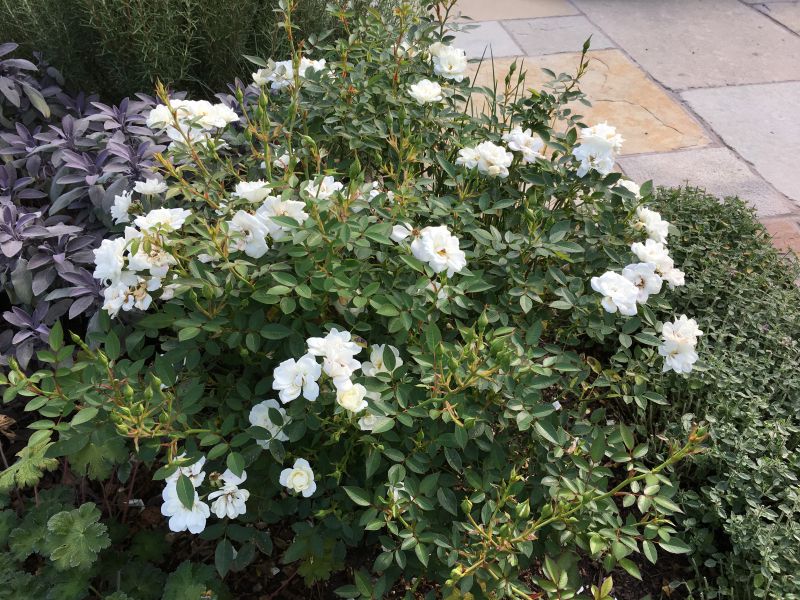
Formal layout
If your garden has been designed in a formal layout, whether that is simple contemporary lines or in a more traditional parterre style, roses are a great way to bring the ‘wow factor’.
- Try repeat planting a small number of varieties or use just one colour to create impact.
- Roses can be used as punctuation points along a vista or as an alternative to front of border planting or hedging.
Cottage Style Borders
Shrub roses, both modern and old English varieties, are the classic plants to use in English cottage garden planting schemes.
- The key is to mix in a variety of repeat flowering perennials alongside your roses in an informal layout to give long lasting seasonal colour.
- Perennials such as Salvias, Geraniums, Nepeta and Asters are great companion plants for roses.
- If you would like to add some early colour, try underplanting with spring bulbs as the bulbs will appear before the roses come into leaf.
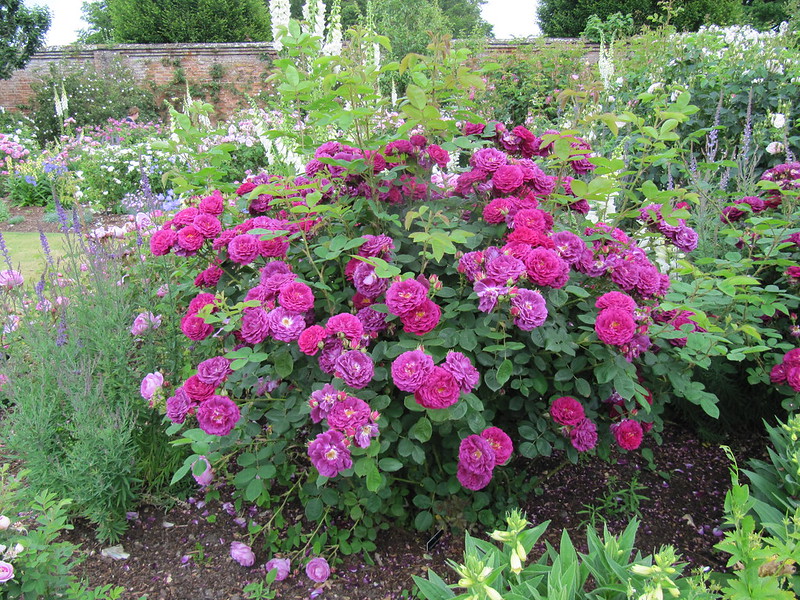
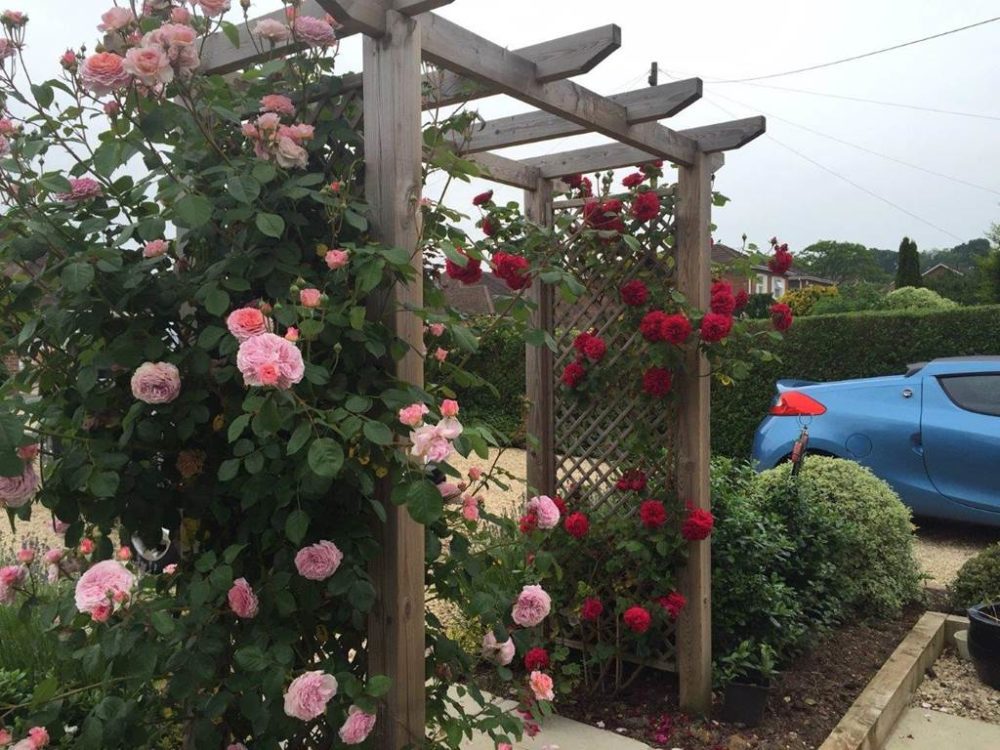
Climbing Over Structures
Training, climbing or rambling roses over structures such as arbours, pergolas or even up a wall, will add vertical colour to your garden.
- Make sure your consider the size of your structure before choosing your rose, as some climbers are more vigorous than others.
- Varieties such as ‘The Pilgrim’ with it’s lovely bright yellow petals or ‘Clair Austin’ with it’s beautiful cream blooms are both great choices for archways or pergolas.
- If you have a large wall, varieties such as ‘Gertrude Jekyll’, a vibrant pink, or ‘Wedding Day’, a vigorous rambler, will fill an otherwise dull backdrop quickly.
- There are even a few varieties that will tolerate a semi-shady wall, just be sure to check the advised position before planting.
Seating Areas
The smell of roses in the summer is one of my favourite things in a garden and planting roses close to a seating area can create a lovely inviting environment.
- Highly scented varieties are best for this position, so consider Hybrid tea or old English varieties.
- There are many types of scents available from light and almost fruity to traditional musk rose.

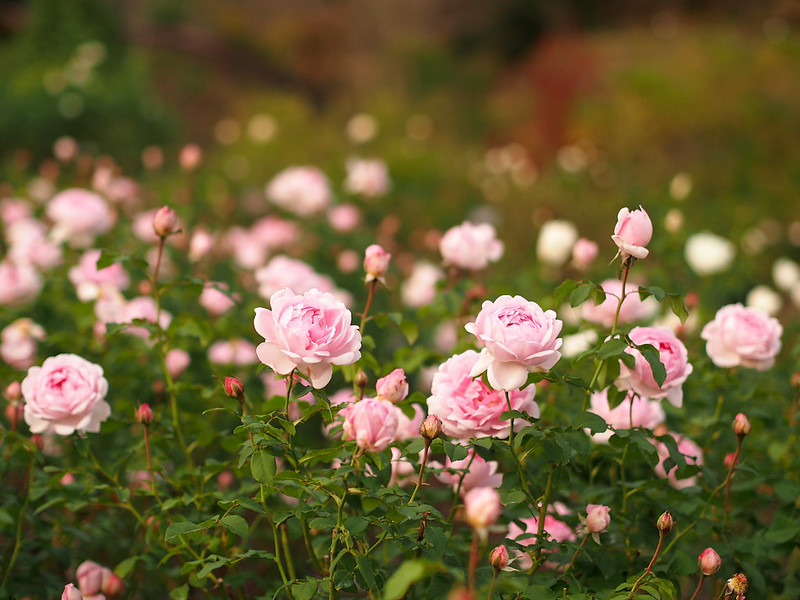
Hedging
If you are looking to edge a path or cover a fence but don’t want a traditional green hedge, consider using roses for a colourful alternative.
- For an informal or traditional mixed hedgerow consider wild rose or rugosa varieties. The hips from these can also be used in cooking.
- For a more formal look, consider smaller shrub varieties such as Rosa ‘Kent, which can create a lovely low hedge which flowers all summer.
- Alternatively, many of the larger shrub roses such as ‘Desdemona’ planted in a single row will give a bold colour block effect along a fence line.
In Pots
For small gardens and patios, it’s possible to bring roses to your scheme by growing them in pots. There are many that would suit a container garden, adding a long season of colour.
- Patio or ground cover roses are best for this situation as their nature is low growing and very tough, such as Rosa ‘Sweet dream’.
- If you have space, a large pot with a shrub rose such as Lady of Shalott’ or ‘Kew gardens’ (shown here) can be very striking in the corner of a patio or end of a path.
- Be sure to regularly water the pots and feed every couple of weeks throughout summer to ensure healthy plants and promote repeat flowering.
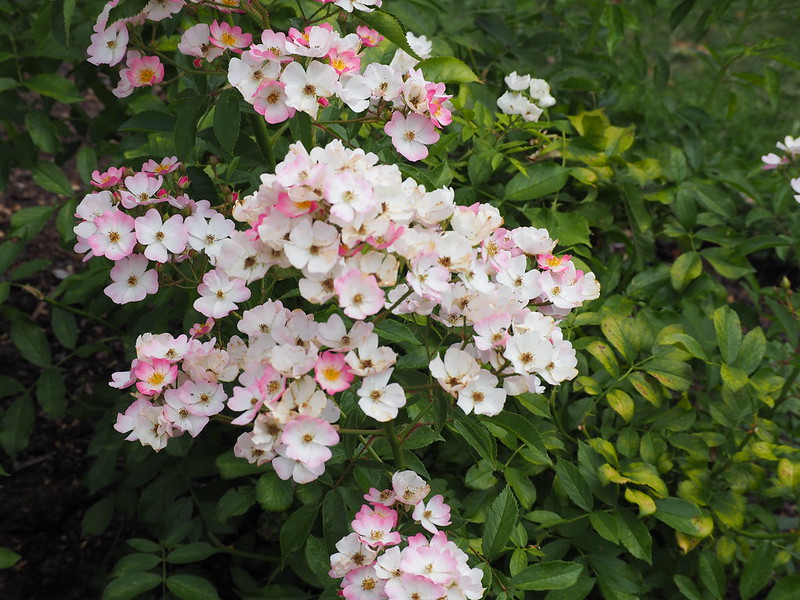
These are just a few of the situations where roses can really shine and add real impact to any style of design, but when it comes to roses, the options are endless!
If you’re interested in discussing more ideas for roses in your garden we’d love to meet and discuss your project in detail – book your free no-obligation garden consultation today.
Photo Credits